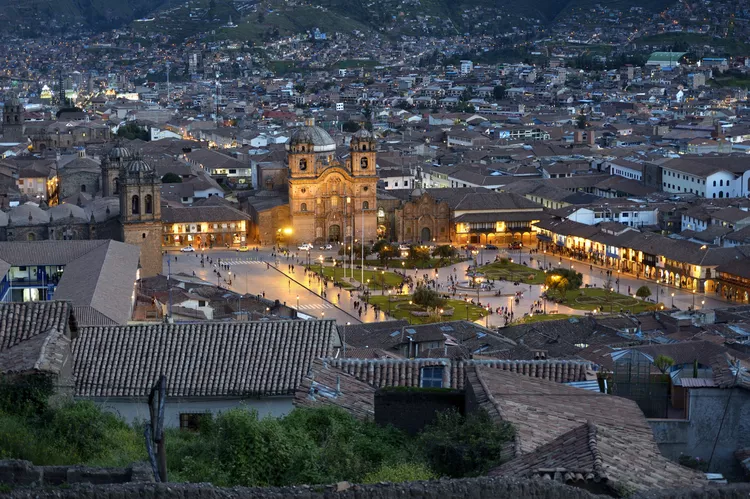Summary of Plaza de Armas
The Plaza de Armas, also known as the Plaza Mayor, is one of the main tourist attractions in Lima, Peru. Since its inception in 1535, coinciding with Francisco Pizarro’s founding of Lima, the Plaza de Armas has remained the focal point of the city.
The following structures are historically and architecturally significant buildings surrounding Lima’s Plaza de Armas, starting with the Government Palace on the north side and moving clockwise.
Government Palace

The Government Palace (Palacio de Gobierno) dominates the north side of the Plaza de Armas. Francisco Pizarro commissioned the palace in 1535, and over five centuries, it has undergone extensive expansion and renovation, resulting in the grand structure seen today.
Functioning as the headquarters for the President of Peru since the establishment of the Peruvian Republic, access to the palace is restricted. However, visitors can observe the daily changing of the guard, typically around midday, from outside the gates.
Casa del Oidor

Located on the northeastern corner of the square, the Casa del Oidor once housed Lima’s colonial magistrates. Although it is not open to the public, the colonial balconies are an architectural highlight worth appreciating from the outside.
Archbishop’s Palace of Lima

The Archbishop’s Palace is situated on the east side of the plaza. Although it boasts a grand colonial design, the building itself was erected in 1924. Serving as the official residence of the Archbishop of Lima, the structure features a distinctive granite facade complemented by beautiful cedar balconies.
Cathedral of Lima

Adjacent to the Archbishop’s Palace, the Cathedral of Lima features a lengthy history. The original edifice, constructed primarily of adobe bricks, commenced in 1535. The cathedral visible today results from two major reconstructions influenced by significant earthquakes, including the last one in 1940. Notably, it houses the tomb of Francisco Pizarro.
South Side of the Plaza de Armas

The southern end of the Plaza de Armas is characterized by two colonial-style buildings adorned with vibrant balconies, flanking a central passageway. To the right, you can find the headquarters of Caretas magazine. The narrow street that separates the buildings is named Pasaje Olaya, extending from Jirón Huallaga (the square) to Jirón Ucayali, one block south. It is named in honor of José Olaya, a martyr of Peru’s independence struggle, who met his end in that passage.
Palace of the Union

The Palace of the Union (Palacio de la Unión) occupies the west side of the Plaza de Armas. Established in 1942, it serves as the headquarters for the Club de la Unión, an association founded in 1868 comprising notable Peruvian military heroes including Miguel Grau, Alfonso Ugarte, and Francisco Bolognesi.
Municipal Palace (City Hall)

Lima’s Municipal Palace (Palacio Municipal de Lima), found on the western side of the square, serves as the city’s governing authority. Construction began in 1549, but multiple earthquakes prompted extensive repairs and reconstructions over the years. The current Municipal Palace was inaugurated in 1944, featuring a neo-colonial facade that harmonizes with the surrounding architecture while showcasing an interior inspired by the French Renaissance.
Central Fountain

Once the site of the city gallows, the center of the Plaza de Armas was transformed in 1578 by Spanish viceroy of Peru Francisco de Toledo, who commissioned a beautiful water fountain. This fountain has since undergone further changes, most notably in 1651 when Viceroy García Sarmiento de Sotomayor installed his version, which continues to grace the plaza today.





